 |
|
|
plants
text index | photo
index
|
| coastal plants |
| Raffles'
pitcher plant Nepenthes rafflesiana Family Nepenthaceae updated Jan 13 Where seen? In Singapore, it is usually found in adinandra belukar, forest edges or on seaward sides of our natural cliffs on many of our offshore islands. This plant has the largest pitchers in Singapore and was first discovered in Singapore in 1819 by Dr William Jack, the Scottish botanist and surgeon who accompanied Raffles to Singapore. Features: A climber that grows to 10m long or more, producing long tendrils to clamber over trees and other plants. It has two kinds of leaves. One kind narrow, oblong (20-30cm long) leathery with tendril-like tips that may coil around other plants. The other kind of leaves form pitchers that are vase-shaped or narrowly funnel-shaped (20-35cm long), green at the base and purplish-red at the mouth with two prominent ribs. It may have ground pitchers which are urn- or goblet-shaped (rounder) (5-25cm long) with two fringed wings. Male and female flowers on separate plants and are pollinated by night-flying moths and insects. Male flowers tiny, many densely clustered on a tall spike (80cm long), female flowers green banana-shaped in a cluster. Fruits reddish capsules which split open explosively releasing thread-like seeds that disperse in the wind. Pit of Death: The pitchers are modified leaves, each with a tiny lid. Nectar is secreted by glands under the lid or at the lip of the pitcher, which are colourful too. These attract insects. The pitcher's lip is smooth and inner surface covered with loose scales of wax that clog up the feet of insects. Thus a small misstep causes the hapless insect to slide into the fluid in the pitcher, where it eventually drowns. The resulting nutrients in the fluid are absorbed by the plant. Pit of Life: Despite the treacherous nature of the pitcher, the Nepenthes Crab Spider (Misumenops nepenthicola) lays its eggs on the inside of the pitcher walls, and ambushes insect prey that approach the pitchers. According to Butterfly Circle, the tiny butterfly Pitcher Blue (Virachola kessuma deliochus) lays its eggs on a maturing seedpod and the developing caterpillars bore into the pod and devour the developing seeds, moving onto another pod as it grows, finally pupating in yet another pod or even inside a pitcher. Human uses: According to Burkill, the tough stems of pitcher plants (species not specified) are used in rope making, while the roots are used to treat stomach aches, dysentery and in poultices. The stem may be used to treat coughs and fevers. Status and threats: The plant is listed as 'Vulnerable' in the Red List of threatened plants of Singapore. |
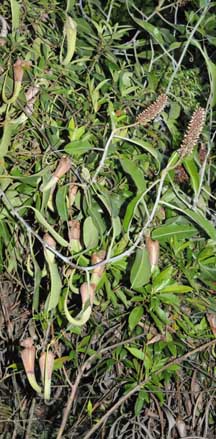 Sentosa, Jun 09 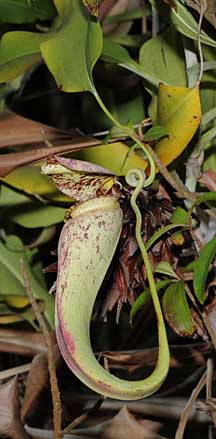 Leaf modified into a pitcher. Sentosa, Aug 09 |
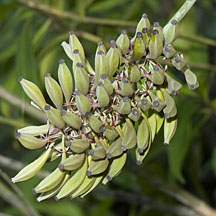 Female flowers. 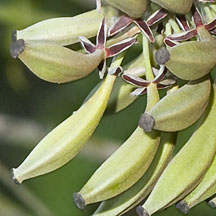 Sentosa, Apr 04 |
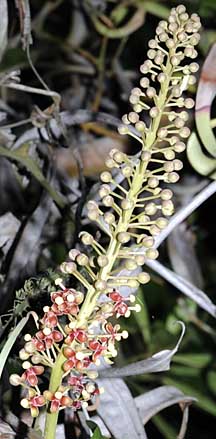 Male flowers. Sentosa, Dec 10 |
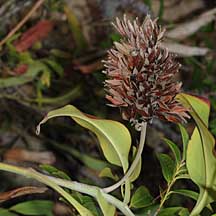 Ripe capsules split, releasing thread-like seeds.. 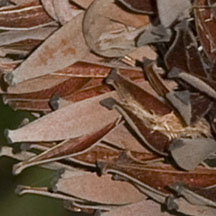 St John's Island, Aug 09 |
Raffles pitcher plants on Singapore shores
| Photos for free download from wildsingapore flickr |
|
Links
References
|
|
|